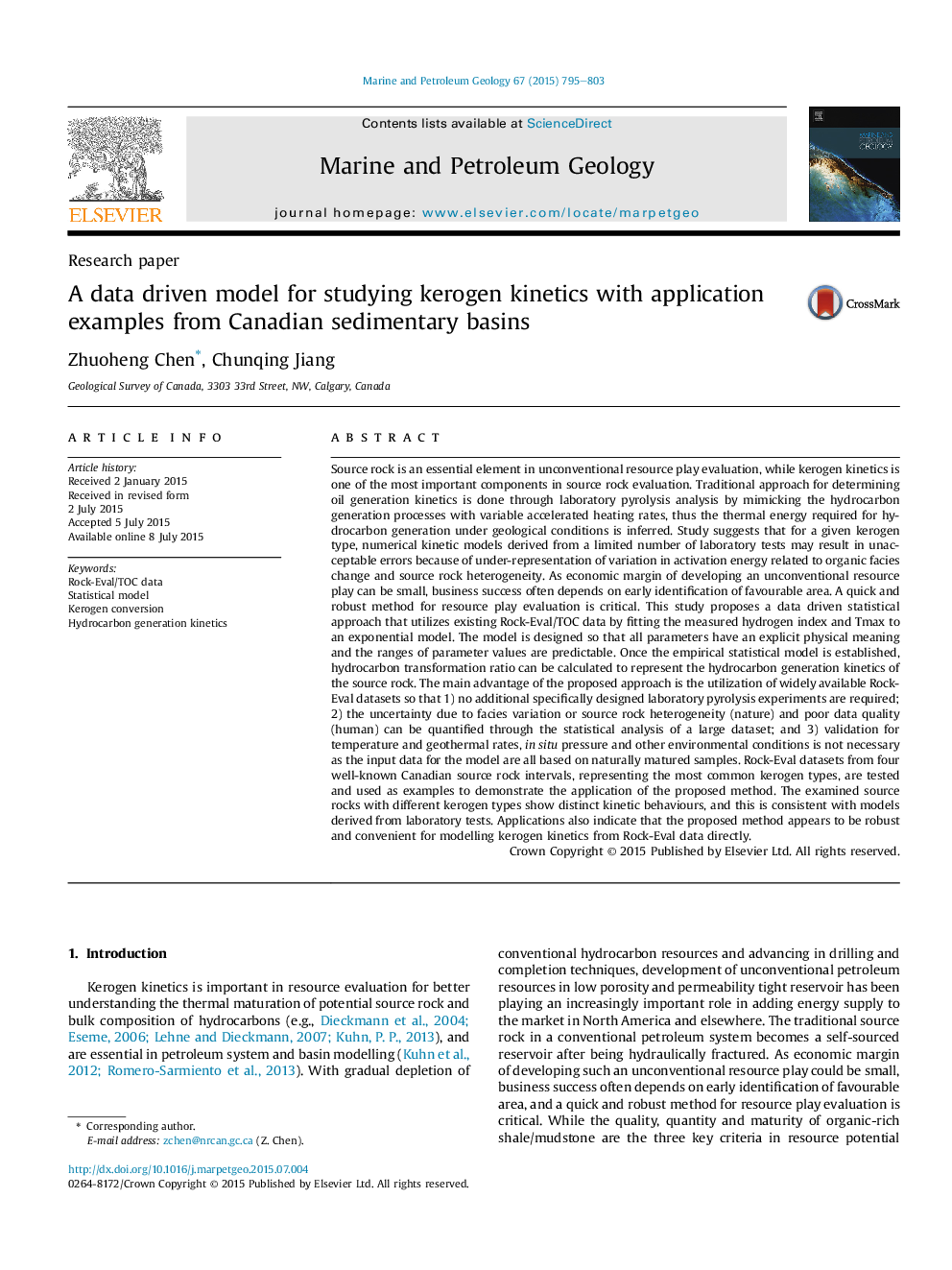| کد مقاله | کد نشریه | سال انتشار | مقاله انگلیسی | نسخه تمام متن |
|---|---|---|---|---|
| 6434987 | 1637159 | 2015 | 9 صفحه PDF | دانلود رایگان |
- A data driven method is proposed to evaluate hydrocarbon generation kinetics.
- The method uses routine Rock-Eval data obtained on source rock samples.
- Original hydrogen index can be inferred for kerogen type classification.
- Hydrocarbon transformation pathway can be modelled for geological conditions.
- The statistical approach allows quantifying uncertainty from various sources.
Source rock is an essential element in unconventional resource play evaluation, while kerogen kinetics is one of the most important components in source rock evaluation. Traditional approach for determining oil generation kinetics is done through laboratory pyrolysis analysis by mimicking the hydrocarbon generation processes with variable accelerated heating rates, thus the thermal energy required for hydrocarbon generation under geological conditions is inferred. Study suggests that for a given kerogen type, numerical kinetic models derived from a limited number of laboratory tests may result in unacceptable errors because of under-representation of variation in activation energy related to organic facies change and source rock heterogeneity. As economic margin of developing an unconventional resource play can be small, business success often depends on early identification of favourable area. A quick and robust method for resource play evaluation is critical. This study proposes a data driven statistical approach that utilizes existing Rock-Eval/TOC data by fitting the measured hydrogen index and Tmax to an exponential model. The model is designed so that all parameters have an explicit physical meaning and the ranges of parameter values are predictable. Once the empirical statistical model is established, hydrocarbon transformation ratio can be calculated to represent the hydrocarbon generation kinetics of the source rock. The main advantage of the proposed approach is the utilization of widely available Rock-Eval datasets so that 1) no additional specifically designed laboratory pyrolysis experiments are required; 2) the uncertainty due to facies variation or source rock heterogeneity (nature) and poor data quality (human) can be quantified through the statistical analysis of a large dataset; and 3) validation for temperature and geothermal rates, in situ pressure and other environmental conditions is not necessary as the input data for the model are all based on naturally matured samples. Rock-Eval datasets from four well-known Canadian source rock intervals, representing the most common kerogen types, are tested and used as examples to demonstrate the application of the proposed method. The examined source rocks with different kerogen types show distinct kinetic behaviours, and this is consistent with models derived from laboratory tests. Applications also indicate that the proposed method appears to be robust and convenient for modelling kerogen kinetics from Rock-Eval data directly.
Journal: Marine and Petroleum Geology - Volume 67, November 2015, Pages 795-803
